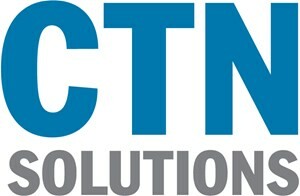In today’s digital landscape, ransomware attacks have become one of the most prevalent and damaging cybersecurity threats. These malicious attacks encrypt valuable data, holding it hostage until a ransom is paid. To protect yourself, your business, and your sensitive information from falling victim to ransomware, it is crucial to implement a robust cybersecurity strategy. Below is an essential checklist to fortify your defenses against ransomware attacks:
- Backup Regularly: The first line of defense against ransomware is regular data backups. Establish a comprehensive backup strategy that includes automated backups of critical data. Ensure backups are stored in separate locations, such as offline or cloud-based solutions, and test the restoration process periodically to guarantee their reliability.
- Update Software Regularly: Keep all software, including operating systems and applications, up to date with the latest security patches. Cybercriminals often exploit vulnerabilities in outdated software to gain unauthorized access. Enable automatic updates whenever possible to ensure timely protection against emerging threats.
- Implement Robust Antivirus and Anti-malware Solutions: Deploy reputable antivirus and anti-malware software across all devices within your network. Regularly update the software and schedule system scans to detect and eliminate any potential threats. Consider using advanced endpoint protection solutions that offer behavior-based detection to identify and block ransomware attacks proactively.
- Enable Firewall Protection: Activate firewalls on all network devices, including routers, to create a barrier between your network and the internet. Firewalls monitor incoming and outgoing traffic, blocking unauthorized access attempts and filtering potentially malicious connections. Configure firewalls to restrict unnecessary traffic and allow only trusted applications.
- Educate and Train Employees: Human error is a significant factor in ransomware attacks. Educate your employees about phishing emails, suspicious links, and social engineering tactics used by cybercriminals to gain unauthorized access. Conduct regular training sessions to raise awareness and teach best practices for cybersecurity, such as strong password management and cautious browsing habits.
- Implement Least Privilege Access: Adopt the principle of least privilege, granting users only the minimum level of access required to perform their tasks. Limiting user privileges mitigates the impact of a potential ransomware attack by restricting unauthorized access and minimizing the spread of malware across the network.
- Enable Multi-Factor Authentication (MFA): Implement MFA for all user accounts, particularly for remote access to critical systems. Multi-factor authentication adds an extra layer of security by requiring users to provide additional authentication factors, such as a one-time password or biometric verification, in addition to their credentials.
- Regularly Test Incident Response Plan: Develop a comprehensive incident response plan that outlines the steps to take in the event of a ransomware attack. Conduct regular tabletop exercises and simulations to test the effectiveness of the plan and identify areas for improvement. Update the plan based on lessons learned from these exercises.
- Employ Email and Web Filtering: Utilize advanced email and web filtering solutions to block malicious attachments, URLs, and phishing attempts. These solutions can identify and quarantine suspicious emails or websites, preventing users from inadvertently interacting with ransomware-infected content.
- Conduct Vulnerability Assessments and Penetration Testing: Regularly perform vulnerability assessments and penetration tests to identify weaknesses in your network and systems. By identifying and addressing vulnerabilities proactively, you can reduce the risk of ransomware attacks. Engage with reputable security professionals to conduct thorough assessments and provide actionable recommendations.
Ransomware attacks continue to pose a significant threat to individuals and organizations. By implementing the cybersecurity checklist outlined in this blog post, you can fortify your defenses against ransomware and significantly reduce the risk of falling victim to these malicious attacks. Remember, staying vigilant, regularly updating your defenses, and educating your team are essential for maintaining a secure digital environment. Protecting your data from ransomware requires a proactive approach and a commitment to ongoing security practices. By following this checklist, you’ll be well-equipped to mitigate the risk of ransomware attacks and safeguard your valuable information. Stay informed, stay prepared, and stay secure!
